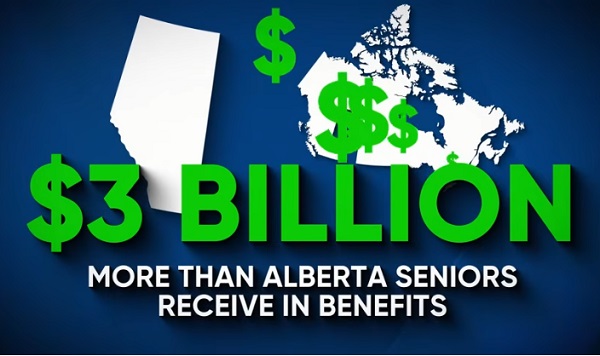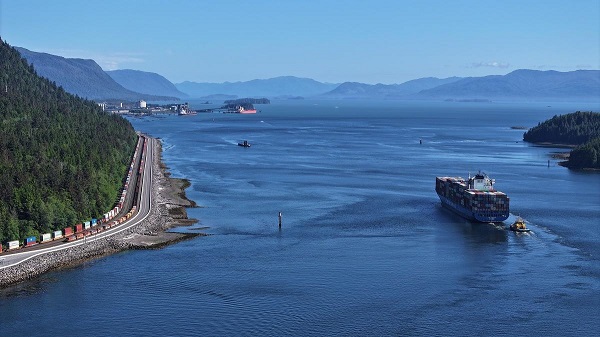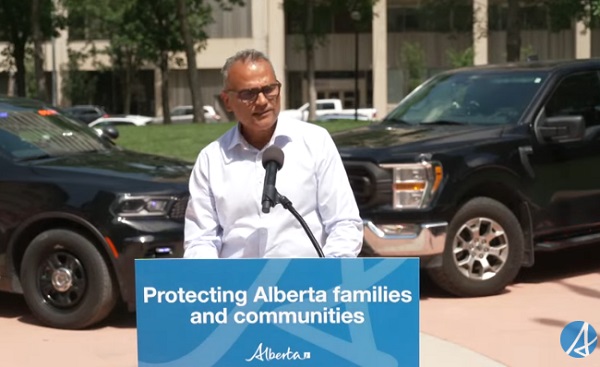David Clinton
How would provinces and cities survive if the federal government collapsed?


How Resilient Are Canadian Provinces?
Suppose one fine day the federal government was unable to show up for work. Perhaps it wasn’t feeling well. Or maybe it had borrowed so much money that it maxed out its line of credit, defaulted on its interest payments, and just couldn’t pay its bills. What then?
Let’s say – and I’m just spitballing here – let’s say that exploding, uncontrolled public debt is a bad thing. All the smart people tell us that taking on too much credit card debt won’t end well, right? Well I can’t think of any solid reason that such logic shouldn’t also apply to governments.¹
The Audit is a reader-supported publication. To receive new posts and support my work, consider becoming a free or paid subscriber.
As you can see from the graph, our federal public debt climbed from $351 billion in 1990 all the way to $884 billion in 2024. The 50 percent leap between Q4 2019 and Q4 2021 was the generous gift of COVID. Things started to recover in mid-2023, but they’ve since nose dived once again.
Ah, but that’s just debt you say. It’s someone else’s problem.
Not exactly. You see, even if we’re not paying down the principle on the debt, you can be sure that we’re covering interest payments. Which, it just so happens, have become a lot more expensive ever since massive government borrowing drove up interest rates.
How much more expensive? As of Q1 2024, our annual interest payments totaled $11.7 billion, compared with $6.2 billion back in Q1 2022. Put differently, the interest we pay each year comes to seven percent of our total federal budget.
I’m certainly not going to confidently predict that the federal government will soon default on interest payments, lose access to capital markets, and begin laying off government workers and shutting down services. But I wouldn’t say that it can’t happen either.
Given that possibility, what can provinces and cities do right now to prepare for a sudden (hopefully brief) disruption? First off, though, what exactly is a province?
As defined by the British North America Acts, areas of the exclusive responsibility of the federal government include:
- Public debt and property
- Regulation of trade and commerce
- Criminal law
- Militia, military and naval service, and defense
- Navigation and shipping
- Banking, incorporation of banks, and the issue of paper money
- Bankruptcy and insolvency
- Naturalization and aliens
- Unemployment insurance
Provinces are responsible for:
- Property and civil rights
- Administration of justice (including policing)
- Municipal institutions
- Education
- Health and welfare
- Natural resources
So a short-term federal disruption might not have much of an impact on most Canadians’ day-to-day activities. Federal employees and UI recipients would have to figure out how to survive without their paychecks and border entry points would shut down. But great news! Your criminal prosecution can go ahead on schedule because, while criminal law is controlled by the feds, lower criminal courts are provincial.
On the other hand, consider how federal transfers contribute between around 15 percent (Alberta) and 40 percent (Atlantic provinces) of provincial budgets. And Toronto’s municipal budget, for instance, includes around 15 percent in transfers from the province, and another five percent from the federal government. So it wouldn’t take long before all levels of government begin to feel the heat.
I’m not suggesting we change Canadian federalism (good luck trying). But a province that’s reduced or eliminated its own budget deficit and successfully weaned itself from incoming federal transfers would probably enjoy a smoother trip through a shutdown. Exploring the legality of temporarily taking over the payroll for critical federal roles (like Border Services), for instance, might also pay dividends when push came to shove.
I would suggest that thinking formally about these issues would be an important part of any government’s emergency planning preparedness. Yesterday was the best time to start. But today is the next best option.
The Audit is a reader-supported publication. To receive new posts and support my work, consider becoming a free or paid subscriber.
Post-COVID, the claims of Modern Monetary Theory proponents didn’t age well.
Invite your friends and earn rewards
armed forces
How Much Dollar Value Does Our Military Deliver?

To my great surprise I recently noticed that, despite being deeply engaged in wars against at least four determined enemies, Israel doesn’t spend all that much more on their military than Canada does on its forces. What might that tell us about government efficiency?
There’s fairly universal agreement that Canada doesn’t spend enough on its military. But before we can even ask how much we should be spending, we should understand how much we’re already spending. And figuring that out isn’t nearly as easy as I’d expected.
According to the 2025–26 Expenditures by Purpose data released by the Treasury Board Secretariat, the Department of National Defence (DND) was allocated $35.7 billion (CAN). However, the New York Times recently reported that Primer Minister Carney’s $9.3 billion increase would bring the total defence-related spending to $62.7 billion – which suggests that, prior to the increase, we were set to spend $53.4 billion (CAN).
So I’ll work with both of those figures: $35.7 billion ($26 billion USD) and the pre-announcement $53.4 billion ($39 billion USD). By contrast, Israel currently spends around $37 billion (USD) on the Israel Defense Forces (IDF) which is in the neighborhood of 18 percent of their total budget.¹ The IDF is (literally) getting a much bigger bang for their buck.²
I’m going to compare the military inventories of both countries to get a sense of what a dollar of government spending can get you. I understand that this isn’t an apples-to-apples comparison and there are many complicating factors here. But I think the exercise could lead us to some useful insights. First off, here’s a very rough estimate of existing inventories:
I’m sure there are plenty of caveats we could apply to those numbers, including how much of that equipment is actually fit for service on any given day. But they’ll have to do.
In addition, there are currently 68,000 regular troops in the Canadian Armed Forces (CAF) along with 22,500 reserves, while the IDF employs 169,500 regular troops and 465,000 reserves. They also cost money.
Based on some very rough estimates,³ I’d assess the value of IDF assets at around 2.6 times the value of comparable CAF assets. That means that the IDF – using their procurement systems – would need to spend just $14.4 billion (USD) to purchase the equivalent of the current set of CAF assets.
Now compare that with our actual (pre-increase) expenditures of either $26 billion USD or $39 billion USD and it seems that we’re overspending by either 80 percent or 270 percent.
I think we’d be wise to wonder why that is.
For full context, Israel receives around $3.8 billion (USD) in military aid annually from the U.S.
Speaking of which, for simplicity, I completely left the ongoing costs of ordinance out of my calculations.
If you’re really interested, you can see my calculations here.
Subscribe to The Audit.
For the full experience, upgrade your subscription.
David Clinton
Why Are Ontario’s Public Schools So Violent?


 David Clinton
David Clinton
Ontario’s Auditor General just released a performance audit on the Toronto District School Board. I’m sure it’ll surprise exactly no one that “financial and capital resources are not consistently allocated in the most cost-effective or efficient way” or that “The effective management of operations was not always being measured and assessed for internal decision-making”.
And there was plenty of institutional chaos:
“Between 2017/18 and 2022/23…about 38% of TDSB schools did not report conducting the minimum number of fire drills required by the Ontario Fire Code annually, and about 31% of TDSB schools did not report conducting the minimum number of lockdown drills required by TDSB policy annually. The TDSB does not have an effective process to ensure the required number of drills are performed by each school, each year, or that they are performed in accordance with TDSB policy when performed.”
What else would you expect from a massive government bureaucracy that employs 40,000 people, spends $3.6 billion annually and – based on many of the highlighted items on their website – is laser-focused on pretty much anything besides education?
What you might not have seen coming was that around half of the report centered on in-school violence. To be sure, we’re told that there were only 407 violent events reported to the board during the 2022/2023 school year – which is a rate of around 17 events for every 10,000 students. 17:10,000 doesn’t exactly sound like an environment that’s spiraling out of control.
There was a caveat:
“Due to input errors by principals, the TDSB underreported the number of violent incidents that occurred between 2017/18 to 2021/22 to the Ministry by about 9%.”
Ok. But we’re still nowhere near Mad Max levels of violence. So what’s attracting so much of the auditor’s attention? Perhaps it’s got something to do with a couple of recent surveys whose results don’t quite match the board’s own records. Here’s how the audit describes the first of those:
“The 2022/23 TDSB Student and Parent Census was responded to by over 138,000 students, parents, guardians and caregivers. It showed that 23% of students in Grades 4 to 12 that responded to the survey said they were physically bullied (e.g., grabbed, shoved, punched, kicked, tripped, spat at), and about 71% stated they were verbally bullied (e.g., sworn at, threatened, insulted, teased, put down, called names, made fun of). Further, about 14% of student respondents indicated they had been cyberbullied. TDSB’s central tracking of all bullying incidents is much lower than this, suggesting that they are not centrally capturing a large number of bullying incidents that are occurring.”
“23% of students in Grades 4 to 12 that responded to the survey said they were physically bullied”. That’s not a great fit with that 17:10,000 ratio, even if you add the 9 percent of underreported incidents. And bear in mind that these students and their families were willing to discuss their experiences in a survey run by the school board itself, so it’s not like they’re hard to find.
But that’s not the worst of it. The Elementary Teachers’ Federation of Ontario (ETFO) ran their own survey in 2023. They wanted to hear about their members’ experiences with workplace violence. Here, quoting from the audit report, is what TDSB respondents told them:
- 42% had experienced physical force against themselves in 2022/23;
- 18% had experienced more than 10 of these physical force incidents in 2022/23;
- 81% indicated the number of violent incidents increased since they started working;
- about 77% responded that violence was a growing problem at their school;
- about 29% indicated they had suffered a physical injury;
- 57% had suffered a psychological injury/illness (such as mental stress, psychological or emotional harm) as a result of workplace violence against them; and
- about 85% indicated that violence at their school made teaching and working with students more difficult.
29 percent of teachers suffered a physical injury due to workplace violence. That’s elementary school teachers we’re talking about.
For perspective, even accounting for the 9 percent underreporting, the TDSB was aware of events impacting less than a quarter of a percentage point of their students (and apparently didn’t report any violence against teachers). But by their own accounts, 23 percent of all students and 42 percent of elementary teachers have suffered attacks. Are board officials willfully ignoring this stuff?
And if only there was some way to address violence and other criminal activities on school property. Perhaps – and I’m just spitballing here – there could even be people working in schools whose job it would be to (what’s the word I’m looking for?) police crime.
On a completely unrelated note, back in November, 2017, the Toronto District School Board voted 18-3 to permanently end their School Resource Officer (SRO) program. Since then, police officers have been unwelcome on board property.
To be sure, the TDSB has “accepted” all 18 of the report’s recommendations. But talk is cheap. Who’s to say that commitment won’t play out the same way we’ve seen with their fire drill compliance.
Can you spell “class action lawsuit”?
-

 Energy1 day ago
Energy1 day agoB.C. Residents File Competition Bureau Complaint Against David Suzuki Foundation for Use of False Imagery in Anti-Energy Campaigns
-

 Alberta2 days ago
Alberta2 days agoAlberta uncorks new rules for liquor and cannabis
-

 COVID-191 day ago
COVID-191 day agoCourt compels RCMP and TD Bank to hand over records related to freezing of peaceful protestor’s bank accounts
-

 Crime2 days ago
Crime2 days agoProject Sleeping Giant: Inside the Chinese Mercantile Machine Linking Beijing’s Underground Banks and the Sinaloa Cartel
-

 C2C Journal22 hours ago
C2C Journal22 hours agoCanada Desperately Needs a Baby Bump
-

 International1 day ago
International1 day agoTrump transportation secretary tells governors to remove ‘rainbow crosswalks’
-

 Alberta1 day ago
Alberta1 day agoAlberta Next: Alberta Pension Plan
-

 Agriculture10 hours ago
Agriculture10 hours agoLacombe meat processor scores $1.2 million dollar provincial tax credit to help expansion







